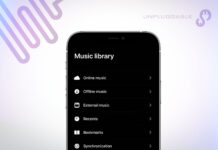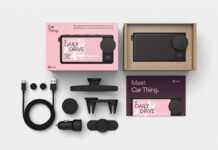It’s not an exaggeration to say that artists and the already fairly grim income they receive from recorded music has been under a steady, almost constant assault by streaming giant Spotify. Most of the still unprofitable company’s new revenue streams have come not from consumers of music or their advertising business, but from charging the artists themselves for access to the company’s gigantic database of users.
Spotify’s latest plans to extract more money from the artists on its platform may have tripped an alarm, however. New programs designed to extract still more money from the artists whose music makes up Spotify’s main product appear to be laying the groundwork for congressional oversight and intervention.
Almost all of Spotify’s visible innovation these days is aimed at leveraging their user base to assist in removing money from artist’s pockets.
What brought the unwelcome attention of the Feds, however, wasn’t even Spotify’s most naked money grab — or even their most recent one.
In June, the Democratic chairs of two powerful congressional committees wrote to Spotify founder and CEO Daniel Ek (net worth: $3.6 billion) demanding information on the company’s new “Discovery Mode” feature. Discovery Mode, Representatives Jerrold Nadler and Hank Johnson, Jr. wrote, “appears to allow artists and record labels to identify particular songs that they would like to prioritize in Spotify’s algorithmic recommendations in exchange for agreeing to be paid a lower, ‘promotional’ royalty rate for those prioritized streams.”
RELATED: Spotify has made millionaires. Almost none of them are musicians. ]
The congressmen warned this may set in motion a “race to the bottom” because artists and labels will “feel compelled to accept lower royalties as a necessary way to break through” to music listeners.
In other words: the new lower royalty rate will become the norm, because everyone will need the exposure to draw Spotify’s users to their new music. Yet — and here’s the really diabolical part — when enough artists agree to the lower rate, it may not even guarantee more exposure “if virtually all commercial artists are also doing the same.”
Spotify’s normal streaming rate, the letter pointed out, was already a microscopic $0.003 to $0.005 per stream. And while promoting this idea of a lower rate for better positioning, Spotify has simultaneously sued to overturn the Copyright Royalty Board’s 2018 decision to raise the royalty rates paid by streaming platforms to songwriters.
The implication here is that, like Facebook pages, “following” an artist is no longer a guarantee that you’ll be notified about their new content. By paying Spotify, the company will open a back door into the algorithm to reach fans you already have.
But Discovery Mode isn’t the worst or even the most recent of Spotify’s attempt to profit by clawing back at the slim earnings paid to artists. While Discovery Mode captured the headlines, Spotify has apparently launched a new beta campaign in which artists pay to reach fans they already have.
This new program is in testing, and “offers” artists the opportunity to get back on the homepage of fans who follow their music but might not be notified of new releases. The implication here is that, like Facebook pages, “following” an artist is no longer a guarantee that you’ll be notified about their new content. By paying Spotify, the company will open a back door into the algorithm to reach fans you already have.
we have been given access to the new Campaigns beta feature. essentially, artists will be required to pay to show their *own followers* that they've released new music.
if you tap on one of these screens, Spotify takes 50 cents straight out of the artist's pocket. pic.twitter.com/E4VKl9CFwk
— Fourth Strike (@StrikeFourth) August 6, 2021
Screenshots shared by labels from the platform suggest the cost per click of this campaign might be as high as $0.50 per click per user — more than 100 times what Spotify will pay the rightsholder in royalties for the stream.
The new campaign follows Spotify’s recent marketing approach, which present advertising options to artists as if they’re new opportunities, but are merely charging for things that had previously been free — and in this case was considered a core feature of the platform.
Almost all of Spotify’s visible innovation these days is aimed at leveraging their user base to assist in removing money from artist’s pockets. In effect, Spotify can now be compared to a bait-and-switch scheme in which customers pay Spotify a monthly fee to listen to music they like, while artists pay Spotify even more money to ensure those paying customers can actually listen to it. It’s the devil all the way down.
























[…] TO READ FULL STORY Clik Here! […]